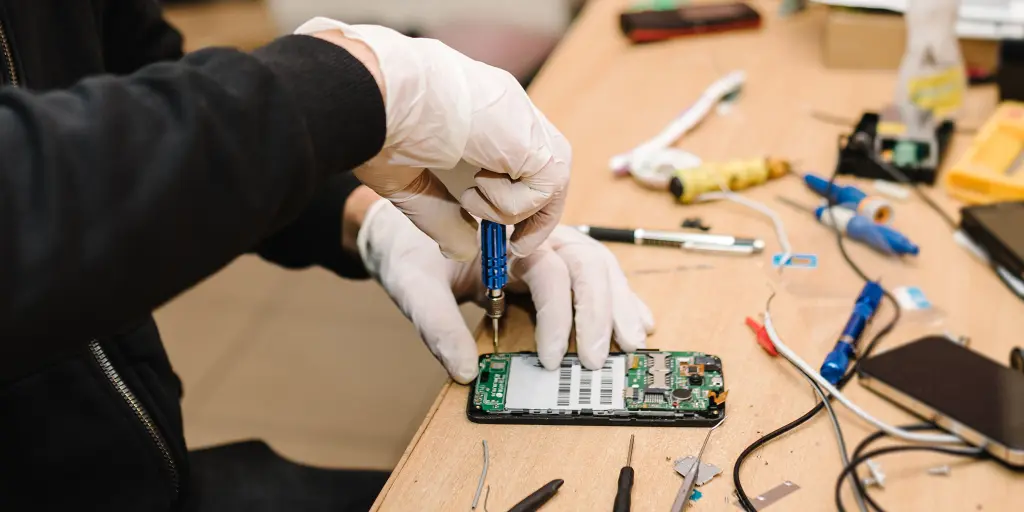Have you ever broken your phone? If so, the price of repair is usually scarier than the drop your phone might’ve taken. There’s a whole process of taking your phone to where you bought it, describing the issue, and the shock of the $499 it’ll cost you for a simple back glass replacement. Every year tech companies stray further from the user-repairable past, and it’s not just phones. Laptops, tablets, and even game consoles are becoming harder to repair every year. Most people simply buy a new one, leading to the broken device becoming harmful e-waste. Some companies, though, are stepping up in tandem with the Repair Association to stop that. They’re starting a revolution, and it's called Right to Repair.
Right to Repair is simple. The Repair Association is fighting to pass actual, real laws to force tech companies to make their tech easier to fix. Let’s flashback ten years to 2013. The most popular smartphones in the US were the Samsung Galaxy S4, released in April of that year, and the iPhone 5, released in September 2012. They were incredibly easy to fix. If you wanted to replace the battery (aka the most commonly replaced component in a phone), all it would take is popping off the easily-removable back panel on your Galaxy S4 or removing a couple of screws from the bottom of your iPhone 5. It was simple. To repair the screen of your iPhone 5, all you needed was to unscrew the bottom, take the broken screen out, and slot the new one in. It was easy.
Going back to 2023, it isn’t so simple. For both the Samsung Galaxy S23 and iPhone 14 Pro Max, it’s an unwieldy process for something that simple. An experienced technician (you can’t do it on your own) would have to get their heating pad and basically cook the front of the phone to melt away the adhesive that holds it together. Next, you’d remove the screen or back panel, potentially cracking the glass. These devices are incredibly difficult to fix, and that leaves it up to Apple or Samsung themselves or the 3rd party repair shop on the corner to fix it for you. The quality of 3rd parties are dubious, and Apple charges ridiculous amounts of money for what should be fairly cheap. If you didn’t already pay upwards of $150 for AppleCare+, their expensive protection plan, it would cost a painstaking $499 to replace the back glass alone. Nobody wants to pay that, and it’s obvious that change had to be made.
That leads right into The Repair Association. They have stepped in to change that for the better. Their website states, “Established in 2013 as the Digital Right to Repair Coalition, The Repair Association brings together repair businesses and consumers to collectively push for public policies that uphold your right to repair. We're committed to advancing pro-repair laws and standards, particularly for products featuring digital electronic components. (repair.org)” This shows that they’re doing what no other company could do. They’re going straight to the top to guarantee a real change in what we consumers have to deal with.
Smaller companies also support the Right to Repair movement, too. iFixit is an amazing company that provides tools, parts, and guides to effortlessly repair your tech on your own. Of course, some people don’t want to risk their pricey $1,400 phone with their dubious repair capabilities, but iFixit empowers those who will. Another company, Fairphone, set out to make the world of smartphone repair simpler at the core: make the phone itself the easy part. Their phones are completely user-repairable from the get-go. As a matter of fact, they encourage repairs. Framework is a laptop company with a similar goal: make your laptop easier to repair and modular enough to want to do so. They all have a goal, and it’s working.
Even big tech themselves are stepping up! Apple made the back glass of their iPhone 15 Pro and Pro Max its own piece, rather than built into the stainless steel frame (which is now titanium), dropping repair cost by nearly 90 percent. Google offers 1st party parts for their Pixel phones to users themselves through iFixit, which is a massive win for the tech community and repair shops alike. It’s growing easier every coming year to fix your precious tech. Not only is it helping your wallet, but keeping otherwise working tech out of landfills is a win for the environment, too. It’s a win-win for the earth and your wallet.
In conclusion, Right to Repair set out to solve the problems of tech repair, and they’re succeeding. Not only are the big tech companies like Apple, Samsung, and Microsoft making their tech easier to fix, smaller companies with sustainability in mind are popping up too. By 2030, Apple aims to be 100% carbon neutral, a huge feat for saving the environment. Other companies are making leaps and bounds towards that as we speak. By making tech easier to repair, you save the environment of e-waste and save your wallet of the cost of an entirely new phone. That’s the beauty of Right to Repair.






